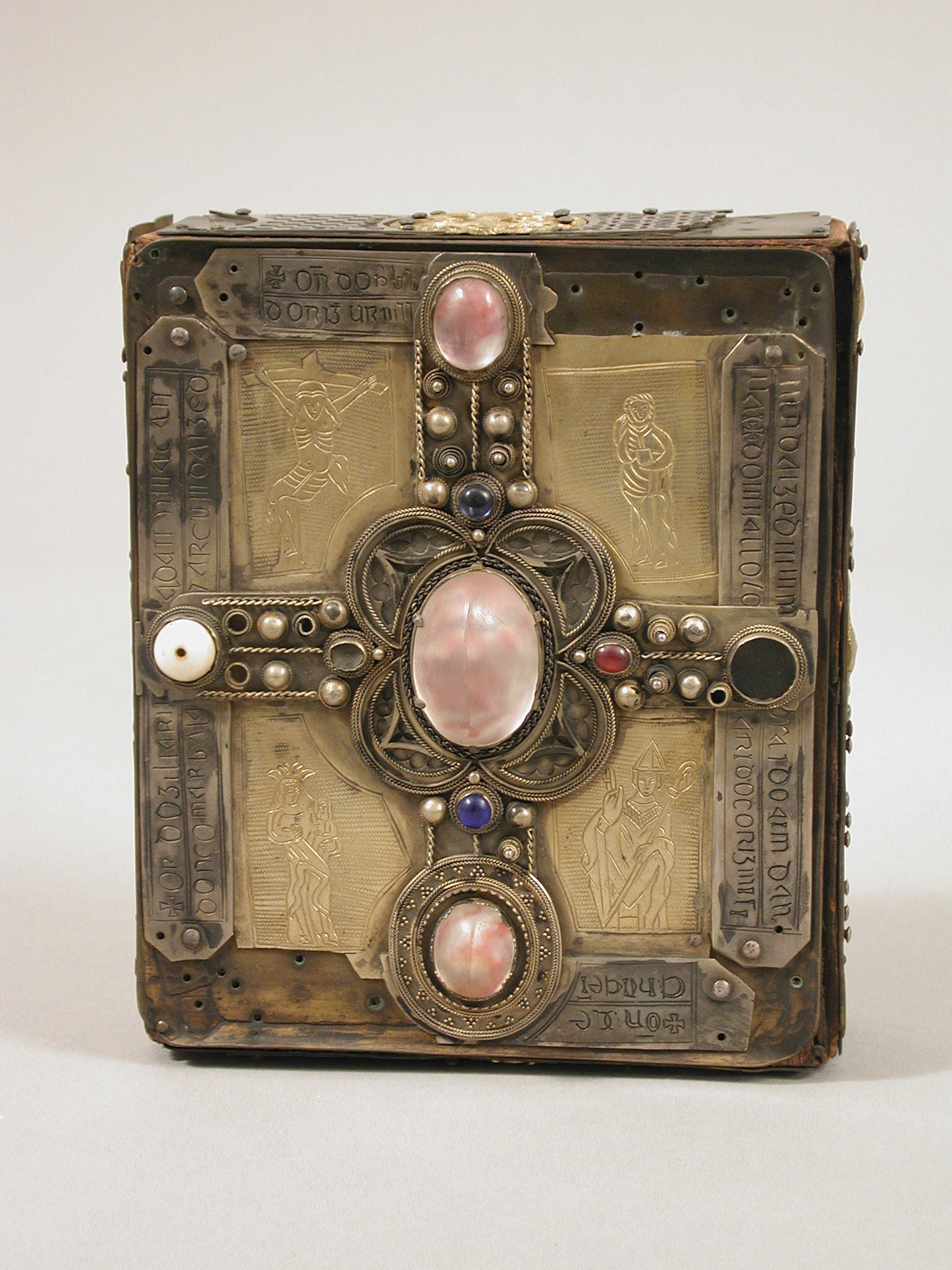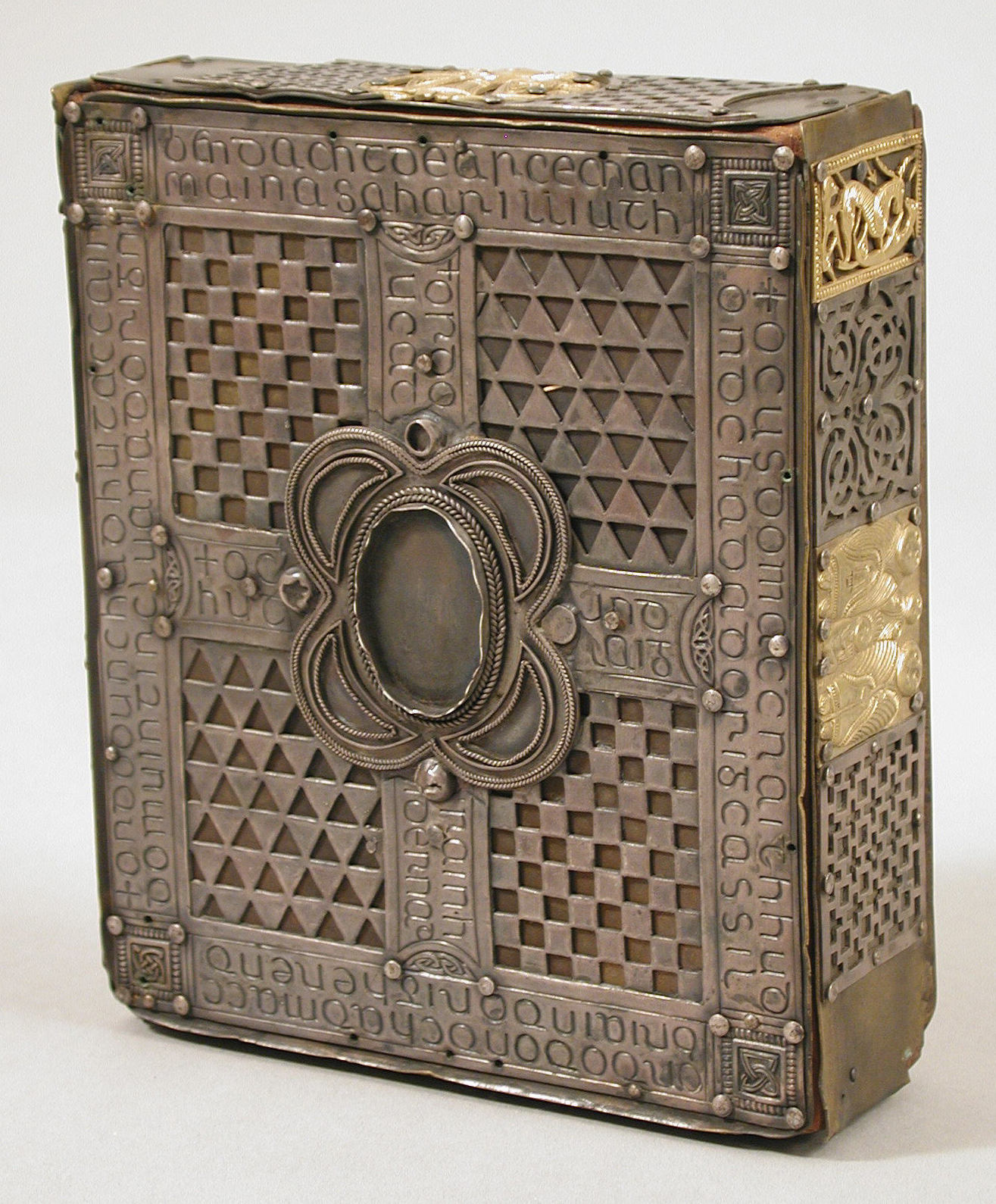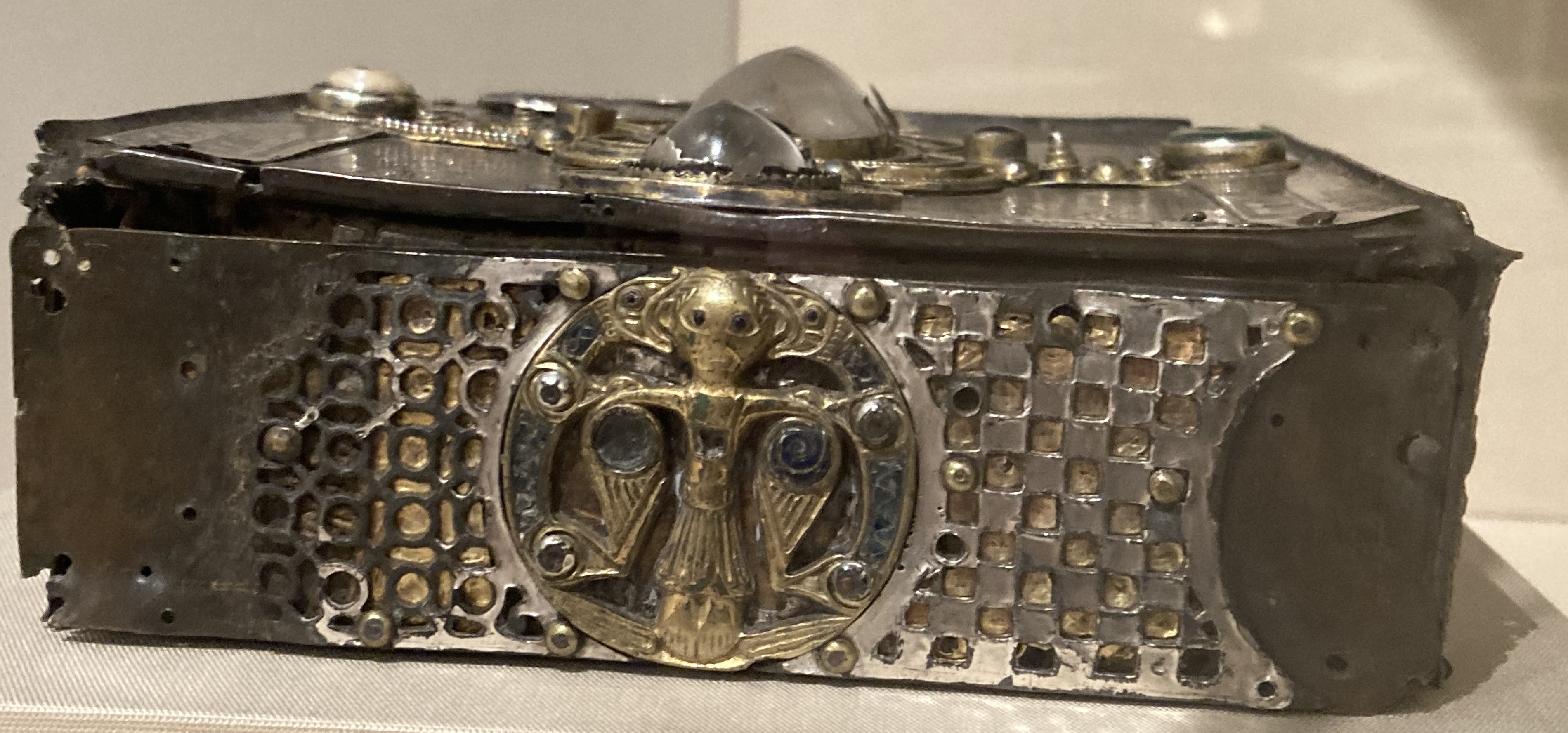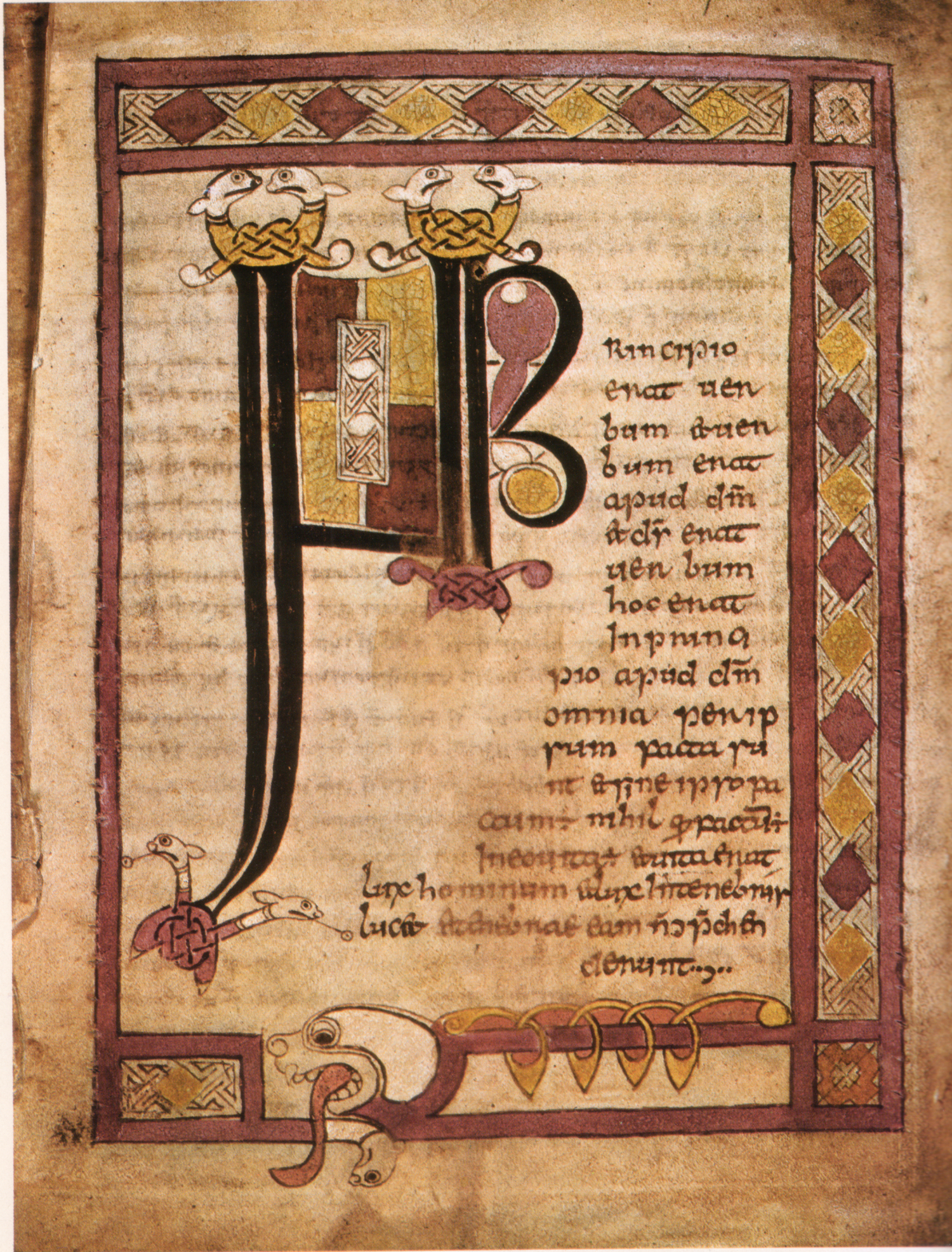Creation and Purpose
The Stowe Missal was created for practical ecclesiastical use. It is a small book, indicative of its purpose for travel or personal use by a cleric rather than for a large congregation. The manuscript includes the order of the Mass, the Canon of the Mass, and other liturgical texts and prayers. Its creation reflects the monastic culture of Ireland during the early medieval period, which was characterized by a strong tradition of manuscript illumination and production.
Historical Significance
The historical significance of the Stowe Missal lies in its representation of the Insular art style and its evidence of the distinct liturgical practices in Ireland before the country's alignment with the Roman Catholic Church. The manuscript is one of the few surviving artifacts that provide insight into the Irish church's unique traditions before the Gregorian reforms were adopted in Ireland.
The cumdach, or book shrine, that houses the Stowe Missal is particularly noteworthy. It is an exquisite example of medieval Irish metalwork and craftsmanship. The cumdach was created later than the manuscript itself, commissioned by a descendant of Taccan from the Cluan family, as indicated by the inscription urging prayers for the craftsman Dunchad. The cumdach's elaborate decoration with pearls, crystals, and metalwork reflects the importance of the manuscript and the reverence in which it was held.
Current Location
The Stowe Missal and its cumdach are currently held at the Royal Irish Academy in Dublin, Ireland. They are part of the Academy's collection of manuscripts and serve as a significant cultural and historical artifact, not only for Ireland but for the study of early medieval Christianity in Europe.
The Stowe Missal's journey from its creation to its current home is a testament to the survival of Irish cultural artifacts through turbulent historical periods, including Viking raids and the dissolution of monasteries. Its preservation allows contemporary scholars and the public to connect with Ireland's rich religious and artistic heritage.
Who Created the Stowe Missal and when was it Created?
The Stowe Missal was created in the late 8th or early 9th century, reflecting the monastic culture and manuscript production traditions of early medieval Ireland. While the exact individual who created the manuscript is not known, it was likely produced by a skilled scribe or group of scribes within a monastic community.
The cumdach, or book shrine, that houses the Stowe Missal was commissioned by a descendant of Taccan from the Cluan family, with an inscription urging prayers for the craftsman Dunchad, who crafted the cumdach. This indicates that Dunchad was responsible for the creation of the cumdach, but not necessarily the manuscript itself. The Stowe Missal is a significant artifact that provides insight into the unique liturgical practices of the Irish church before its alignment with Roman Catholicism and is a fine example of Insular art.
Are there any other Missals Similar to the Stowe Missal?
While the Stowe Missal is a unique artifact of Irish Christian heritage, there are indeed other missals and liturgical manuscripts from various Christian traditions that, while not identical, share similarities in purpose, artistic expression, and historical significance. These manuscripts, like the Stowe Missal, were created for the performance of the Eucharist and other religious rites, and they often contain rich decorations and inscriptions that reflect the cultural and spiritual values of their time.
One example of similar liturgical manuscripts can be found in the traditions of the Eastern Christian churches, such as the East Syrian Church. The East Syrian Anaphoras, for instance, include the Kuššāpê prayers, which are private supplicatory prayers said by the priest. These prayers reflect a sense of unworthiness and devotion similar to the spirit in which the Stowe Missal was created and used. The Kuššāpê prayers, like the texts within the Stowe Missal, are part of a rich liturgical tradition that emphasizes the priest's role and the sacred nature of the offering during the Eucharist. The East Syrian liturgical tradition, with its own unique manuscript production and decoration, offers a parallel to the Insular art and liturgical practices seen in the Stowe Missal.
In the Western Christian tradition, the Missals of the Western rite also bear witness to the development of private devotions and prayers for the priest during the Mass. These devotions, which grew and proliferated over time, parallel the East Syrian Kuššāpê prayers in their emphasis on the priest's humility and the sacredness of the liturgical rites. The Western Missals, with their detailed instructions and prayers for the celebration of the Eucharist, share a common purpose with the Stowe Missal, even as they reflect the distinct liturgical and artistic traditions of Western Christianity.
The comparison between the Stowe Missal and other liturgical manuscripts from both Eastern and Western Christian traditions highlights the universal aspects of Christian liturgy and art, even as it underscores the unique cultural expressions found in each tradition. The Stowe Missal, with its Insular art and specific liturgical texts, is a remarkable example of the Irish Christian tradition, while the East Syrian Anaphoras and Western Missals represent the rich diversity of Christian liturgical practice and manuscript art across the globe.
What are some other famous Missals from Ireland?
The Stowe Missal is one of Ireland's most renowned liturgical manuscripts, but it is not the only one of its kind. Ireland has a rich history of producing illuminated manuscripts and missals, particularly during the medieval period. Some other famous Irish missals and manuscripts include:
1. The Book of Kells - Often considered the pinnacle of Insular art, this 9th-century illuminated manuscript Gospel book is renowned for its lavish decoration. It is held at Trinity College Library in Dublin.
2. The Book of Durrow - This is one of the earliest surviving fully decorated Gospel books in the Insular style and dates back to the 7th century.
3. The Book of Armagh - Dating from the 9th century, this manuscript contains texts that are crucial to understanding the early Irish church, including the earliest surviving copy of St. Patrick's Confessio.
4. The Book of Mulling - This 8th-century manuscript contains the four Gospels and is known for its intricate carpet pages and initial letters.
5. The Lichfield Gospels - Also known as the St. Chad Gospels, this manuscript dates from around the 8th century and is associated with the Irish missionary St. Chad of Mercia.
These manuscripts are not only religious texts but also works of art that reflect the skill and devotion of the Irish monks who produced them. They are significant for their artistic merit, historical value, and the insight they provide into the religious and cultural life of medieval Ireland.
What is the History of the Stowe Missal
The Stowe Missal is an ancient Irish liturgical manuscript that dates back to the late 8th or early 9th century. It is a pocket gospel book that was used for Mass and contains the texts necessary for the performance of the Eucharist according to the Irish rite. The manuscript is named after Stowe House in Buckinghamshire, where it was once kept.




